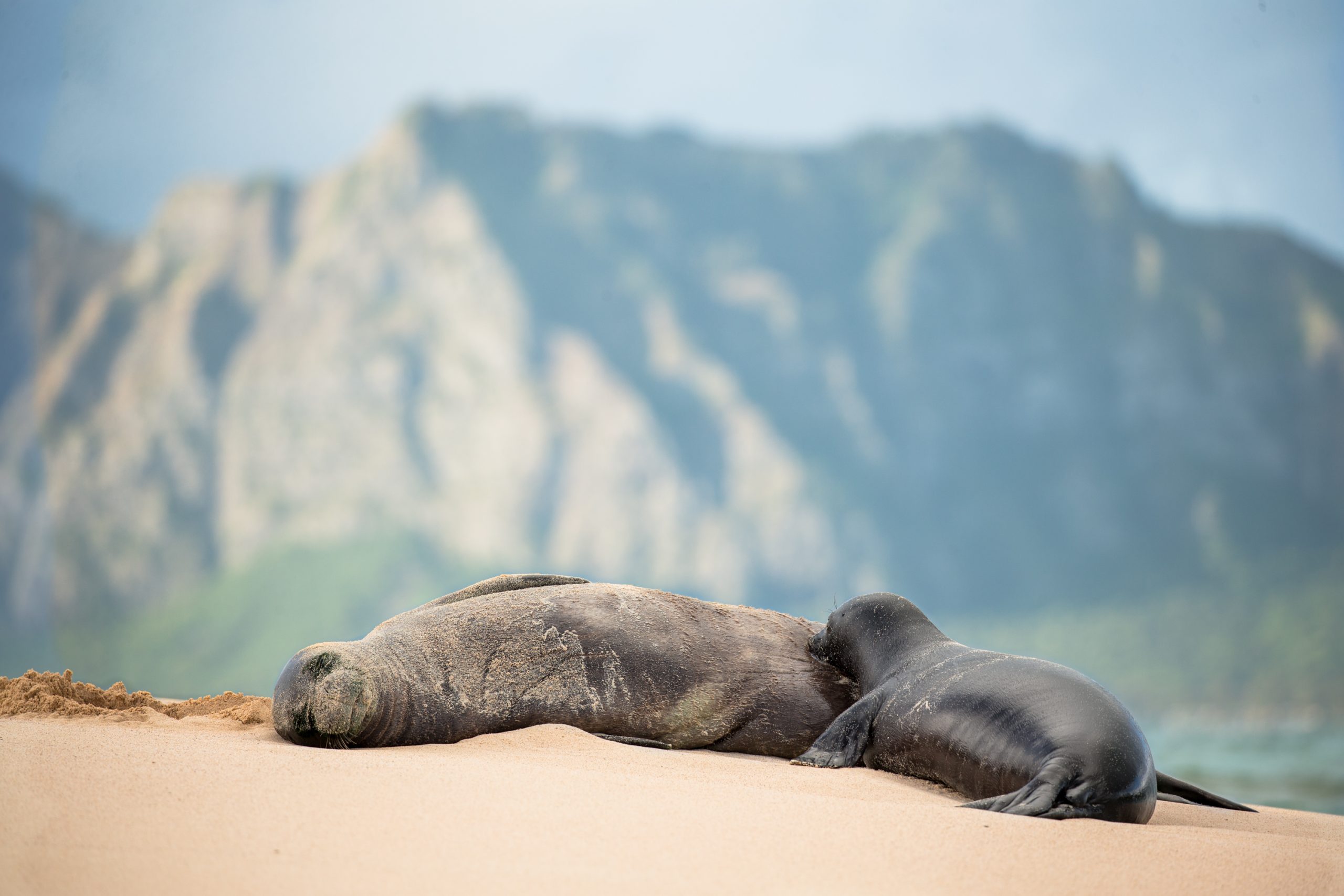Strandings
Addressing the activities and threats
- Last updated | 14 December 2023
Marine mammal stranding is generally associated with cetaceans, but can involve any marine mammal, including sirenians and pinnipeds. In the broadest sense (and possibly the most useful for MPA managers) stranding may include animals on the shore that are unable to return to the water under their own power, those seemingly in need of medical attention, those in the water that cannot return to their own natural habitat without assistance, or dead animals on the beach or in the water [1].

Stranding may occur due to natural factors such as age, disease or navigational errors, or from human-related factors such as bycatch, vessel collisions and environmental degradation. Causes are often thought to be a combination of natural and human factors [2]. A stranding can involve a single individual of any species, or a mass stranding, which usually involves toothed whales (e.g. pilot whales).
The term mass strandings refers to the simultaneous stranding of two or more cetaceans (of the same species), but not including a female and her calf [5]. They are thought to be mostly the result of navigational errors, or following a sick individual into unfamiliar shallow water, although active sonar may on occasion play a role [3]. Single animal strandings are often caused by disease, parasite infestation, harmful algal blooms, injuries from ship strikes or fishery entanglements, pollution exposure, trauma, and starvation [1]. In many cases, a beach-stranded animal has died at sea and has washed up onto land.
Marine mammal strandings are therefore not so much an impact in themselves, but rather a visible symptom of natural or human-induced processes.
There are two major elements to managing marine mammal stranding.
Public communication forms an important part of stranding management by providing easily- accessible information on how to respond to and report strandings in a timely manner. Outreach may also use stranding data to increase public awareness of cetaceans and the threats they face.
A system of emergency response to attend to live strandings, transport live animals, apply medical treatment, and if possible refloat the animal, requires specialist training. Most often (when it exists), this takes the form of a regional or national network run by an agency such as NOAA [1] or the UK Cetacean Strandings Investigation Programme (CSIP).
Dead animals provide an opportunity to learn more about the biology of often difficult-to-study species and their threats. However, to maximise the value of this information, trained people are required to perform necroscopies and analyse mortality. Scientists (whether from government agencies, collaborators, and/or MPA personnel) may be able to identify population-wide health problems with possible remediation actions based on the examination of stranded or bycaught individuals. However, there are some discussions around the extent to which this is possible based on innate biases, because a stranding event is the result of physical, social and biological processes, and whilst any increase or decrease in strandings could reflect a possible change in abundance and/or mortality, it may also be a function of variations in environmental, sea and climatic conditions, observer effort or a combination of these and other factors [5]. These biases should be taken into account when attempting to make population level inferences. All stranding data should be centrally aggregated and maintained for research [3].
In 2016, an IWC multi-disciplinary expert workshop discussed how best to develop practical guidance on handling cetacean strandings. The workshop concluded that an international Strandings Initiative should be established under the auspices of the IWC, incorporating the skills and experiences of strandings experts from a range of different countries around the world.
In addition to sharing best practice and producing globally agreed guidelines on strandings response, the workshop stressed the important role of the Strandings Initiative in collating and co-ordinating data from national strandings networks. Standardized, global data is vital to understanding the causes of cetacean stranding and addressing those causes which are man-made.
The Strandings Initiative was launched in 2017. It is led by an expert Strandings Co-ordinator, advised by a multi- disciplinary Expert Panel, and overseen by a Steering Group drawn from the Commission’s Scientific and Welfare Committees.
As well as member governments, the Strandings Initiative is engaged with other intergovernmental organisations, academic institutions, regional and national strandings networks.
The SPAW-RAC, within the framework of the CARIMAM project, and in collaboration with Gabriela Hernández-Mora (National Service of Animal Health of the government of Costa Rica) and Caroline Rinaldi (Association Evasion Tropiclae, Guadeloupe), has developed an online training course composed of videos, to support stakeholders who wish to strengthen the marine mammal stranding monitoring network in their territory or develop one.
The first 4 videos cover the following topics : 1) introduction to stranding networks, 2) recommendations for developing a stranding network in a territory, 3) recommendations for intervening on a stranding, 4) recommendations for collecting data and samples on a stranded animal. Each video is about 30 minutes long ; they are in English but Spanish and French subtitles are available. They can be viewed online on the CARIMAM YouTube channel here.
The most up-to-date and best practice guides and resources to respond to stranding, presenting both general guides and regional advice, have been collated.
[1] Web page: NOAA Fisheries (Stranding Network)
[2] Web page: IWC Strandings
[3] Web page: Why do Cetaceans strand?
[4] Web page: ACCOBAMS website
[5] PDF: A Stranding Guide to the Marine Mammals of the Wider Caribbean Region
[6] PDF: Best Practice on Cetacean Post-mortem Investigation and Tissue Sampling (June 2020)
If you would like to get in contact with us, please use the button below.
Copyright 2022 © All rights Reserved. Design by piknetart.com